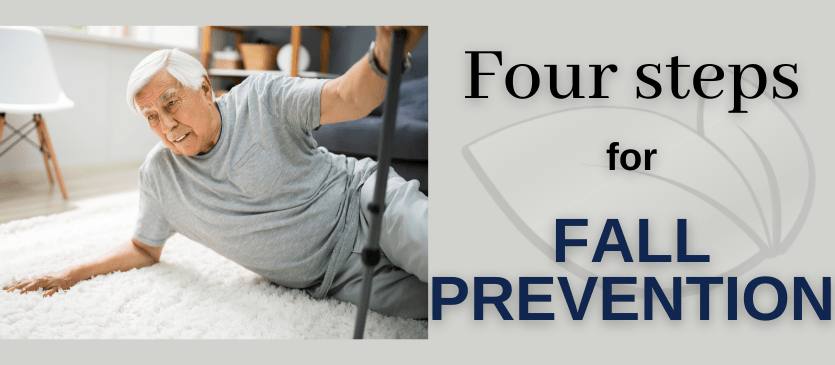Every second of every day, an older adult falls. According to the CDC, one out of five falls cause injuries that lead to loss of independence, and over 800,000 patients are hospitalized each year because of a fall injury, most often because of a head injury or hip injury. Contrary to belief, falls are not a normal part of aging. Most falls can be prevented and you have the power to reduce your risk. There are four steps that you can take to keep yourself for loved one safe and stay independent longer.
Speak up
Speak with your healthcare provider about your personal fall risks. Have them review your medications, including supplements and over-the-counter medicines. As we age, the way medications work in your body can change. Some combinations of medications can cause fall risks such as dizziness and sleepiness. Ask your provider about taking Vitamin D supplements to improve bone, muscle, and nerve health.
Keep moving
Lack of exercise leads to weakness, increasing your chances of falling. Speak to your healthcare provider about appropriate exercise programs to improve your balance and make your legs stronger. Wearing well-fitting shoes with good support inside and outside can also prevent trips and increase comfort.
Get an annual eye exam
Have your eyes checked by an eye doctor at least once a year to evaluate changes in your eye health and update your glasses and/or lenses if needed. If you require progressive lenses, ask about getting a pair of glasses with only a distance prescription that can be used for outdoor activities, such as walking. Bifocals and other progressive lenses can make things seem closer or farther away than they really are.
Make your home safer
Most falls occur at home. In addition to making sure there is adequate lighting and the floors are free from clutter, there are many other things to consider when evaluating the safety of a living space. See the diagram below to identify tripping hazards and other fall associated issues.


